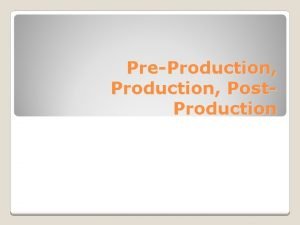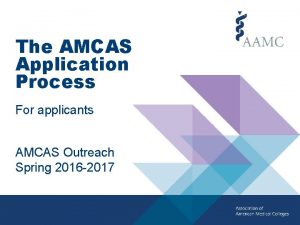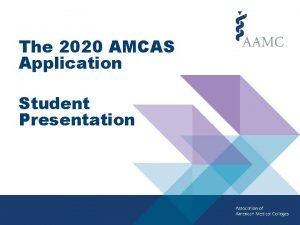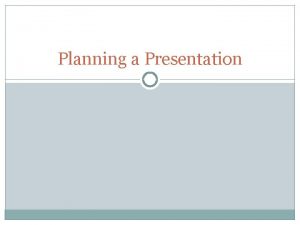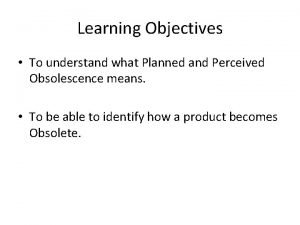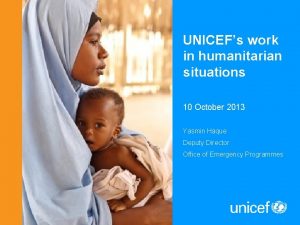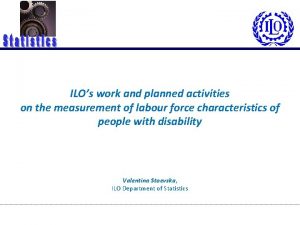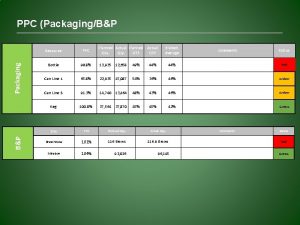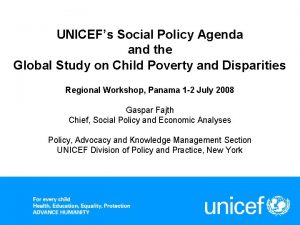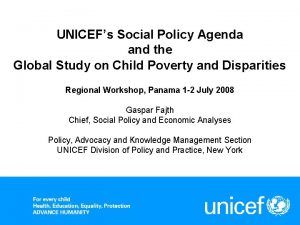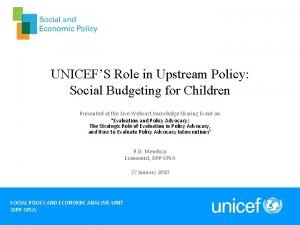UNICEFs work and planned activities for the production




















- Slides: 20

UNICEF’s work and planned activities for the production of data on children with disabilities Claudia Cappa, Data and Analytics Section, UNICEF, NY

Component 1: Development of a new survey module Component 2: Guidelines and manuals for data collection Component 3: Capacity building

Module to measure environmental factors and school participation

Rationale • The WG and UNICEF have started working on an extended set of questions on child disability that will focus on environmental factors and participation – to provide information that can inform policy – to provide a statistical summary of environmental influences on participation in school – to identify areas with key bottlenecks

Basic principles • This set of questions will: – Be a module that can be added to another survey – To be used in conjunction with the module on child functioning and disability – Take approximately 10 minutes – Focus on formal education and environmental factors that influence participation – Be designed to capture the interaction between the participant and the environment

Conceptual Framework 1. Attitudes • parents’ perceptions • their perceptions of others’ attitudes, including school staff • societal and cultural norms • other children’s attitudes

Conceptual Framework 2. School Environment a) getting to school • transportation (characteristics of all aspects of the system and the need for assistance) • environmental and social safety

Conceptual Framework 2. School Environment b) accessibility within the school • physical accessibility (entryway, corridors, bathrooms, lunch room, classroom, common areas etc. ) • information accessibility • communication accessibility • programmatic accessibility/adaptability • teacher and school attitudes towards disability

Conceptual Framework 2. School Environment c) affordability • fees, costs, and competition for resources associated with attendance • the availability of types of assistance (financial, assistive devices, rehabilitation) • non-educational benefits (e. g. , meals)

Conceptual Framework 3. Out of school • Reasons for not attending school

Completed tasks and next steps • Review of existing questions finalized (32 measures and 668 questions related to environmental factors reviewed) • Preparation of a draft module ongoing • Meetings with key stakeholders to finalize a module for testing : December 2014 • Cognitive and field testing will follow • Module to be finalized by end of 2015

Development of Guidelines and Manual for data collection

Guidelines for producing statistics on children with disabilities • Objective: Provide guidance for those considering collecting data on children with disabilities • Discusses conceptual and theoretical issues related to measuring disability • Includes considerations for designing, planning, and implementing the collection of data on children with disabilities • Expected to be ready in late 2014/early 2015

Table of contents Chapter 1: Overview Chapter 2: The importance of monitoring child development and disability Chapter 3: Concepts and definitions Chapter 4: Assessing factors of the environment and participation in child disability Chapter 5: Key domains of child development and disability Chapter 6: Review of methods and tools used to date to measure disability in children Chapter 7: Key considerations in planning, designing, and implementing the collection of data on disability in children Chapter 8: Data analysis and dissemination Chapter 9: Translating knowledge into action Chapter 10: Conclusions

Manual/User’s Guide for the UNICEF/WG child functioning and disability module • Objective: This manual provides background information on the development of the module, as well as technical information that will be useful for countries intending to implement it. • The manual should be used in conjunction with the general Multiple Indicator Cluster Survey (MICS) manual which discusses the overall survey methodology in detail. • Expected to be ready in late 2014/early 2015

Table of contents Chapter 1: The Importance of Disability Statistics for Children: discusses the need for reliable data that is comparable across countries; the complexities in collecting such data and findings from previous data collection efforts. Chapter 2: Background: presents the International Classification of Functioning, Disability and Health (ICF) as the conceptual framework for the child functioning and disability module and describes the steps that UNICEF and the Washington Group on Disability Statistics used to design, test and validate the instrument. Chapter 3: How to Use the Module: presents options for using the questionnaire as a module in an ongoing household survey such as the MICS or the Demographic Health Survey (DHS), as a screening tool for a two-stage data collection process or as a stand-alone module in a health or disability survey.

Table of contents Chapter 4: Content of the Module: describes the rationale behind each question and how the module differs from questionnaires designed to measure disability among adults. Chapter 5: Implementing the Module: provides special instructions about translation, pretesting, sample requirements, identification of respondents and eligible children and guidelines for customization Chapter 6 Data processing: provides guidance and for entering the data and syntaxes for data processing. Chapter 7 Data analysis and dissemination: provides guidance for analysing and interpreting the findings, calculating indicators, and tabulating and reporting the data.

Capacity Building

Workshops on the measurement of child disability Purpose: To build/strengthen local capacity for data collection, interpretation, and use. Content: Concepts, models and measures of disability, survey design, data processing, data analysis, data dissemination and data use. Audience(s): National Statistics Offices, other Government staff, local researchers, DPOs, etc. When: The workshops are expected to take place in 2015/2016. Where: All 7 UNICEF regions (Latin America and the Caribbean, West and Central Africa, East and Southern Africa, Middle East and North Africa, CEE/CIS, East Asia and the Pacific, and South Asia).

THANK YOU!
 A wise economist asks a question
A wise economist asks a question Sebutkan alur produksi multimedia
Sebutkan alur produksi multimedia A is the set of planned activities designed to result
A is the set of planned activities designed to result Objectives are the end result of planned activity.
Objectives are the end result of planned activity. These activities
These activities Support activities and primary activities
Support activities and primary activities Primary activities and secondary activities
Primary activities and secondary activities The statement of cash flows helps users
The statement of cash flows helps users Pre production activities
Pre production activities Production activities
Production activities Organize and complete daily work activities
Organize and complete daily work activities Work, power and energy activities
Work, power and energy activities Amcas verification
Amcas verification Amcas dates
Amcas dates Organize and complete daily work activities doc
Organize and complete daily work activities doc Work on the production line is monotonous and lacks
Work on the production line is monotonous and lacks Planned and unplanned presentation
Planned and unplanned presentation Planned and unplanned discourse
Planned and unplanned discourse Perceived obsolescence
Perceived obsolescence Multi location business
Multi location business Lift slab operations must be designed and planned by
Lift slab operations must be designed and planned by








